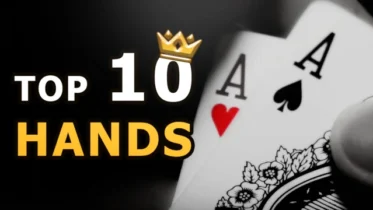After a deep run in a tournament, it is common practice to do a hand history review of the tournament. Essentially, this is a check-up on your game to find any major leak and spend extra time on decisions you are unsure of. This doesn’t even have to be a deep run in a tournament, sometimes a random one is better. You are performing a maintenance check up on your game including preflop opening and 3-betting ranges, continuation betting spots, and tough turn and river situations. Software will play a key roll in reviewing your play, I will have Hold’Em Resource Calculator, Pio Solver, and Equilab near by to help me analyze my play. I will also have my preflop range charts open to quickly analyze my preflop play.
I feel people overcomplicate the tournament review process. When I am reviewing a hand history, I simply am going back and replaying the tournament myself. I will go thru each hand, quickly skipping the easy folds preflop, and just say out loud what I would be doing. With preflop play, I am mostly checking to make sure I am not missing too many opens or defending too tight or wide in the big blind. These are signs that I am playing too many tables and need to cut back. For the preflop work, I am mostly working with my opening ranges that I have saved in Equilab and making sure I am fairly close to them and not missing too many spots.
Are you a bluffing master? Take the quiz to find out!
Preflop spots that I always spend time on are push / fold / re-jam spots. I will run almost every 10 big blind shove spot that comes up as I want to be perfect in these spots. Let’s say it folds to me in the cutoff with 10 big blinds and I have 7-2 offsuit. I know I am folding this in my review, but what is the worst hand I should shove? I will guess in my head and write down the bottom of my ranges, then run the hand in Hold’Em Resources Calculator to see the correct push/fold range.
When I get to post flop study, this is where the meat of my tournament hand history review is. Spots that I am unsure of how to proceed postflop as either the preflop aggressor or cold caller, I will pull up PIO to run a simulation. My goal when running PIO simulations is not to copy the strategy, but rather to see the overall general strategy of the situation. Should I be continuation-betting 100% of the time, or should I be almost never betting here. Is this a spot I should be check-raising very wide, or always calling/folding. Another key thing I focus on when working with PIO is my opponent’s strategy. I like to ask myself if this is a realistic representation of how my opponents will play. If not, how would I adjust the strategy? If I want to get super in-depth, I can “Node” lock when I set the strategy that I think my opponent is playing then re-run the sim. This gives me the best exploitable strategy now for the situation.
When running these PIO sims, I also like to change the situation slightly to learn differences. What happens if I change the stack sizes? How will my strategy change on different turns and rivers? This complete analysis is a way to become a better overall poker player and become more familiar with situations.
Hand history reviews are critical to any poker player’s success. Whether you are playing live or online, you need to be reviewing your play to correct mistakes, and learn and analyze new situations. Learning how to effectively use software is a great way to help analyze unfamiliar situations. I would try to spend at least 2-3 hours a week at a minimum reviewing hand histories. At first, it will be a slow process if you are doing it right, but it will become faster as you become more comfortable in situations.
Best of luck
Matt



